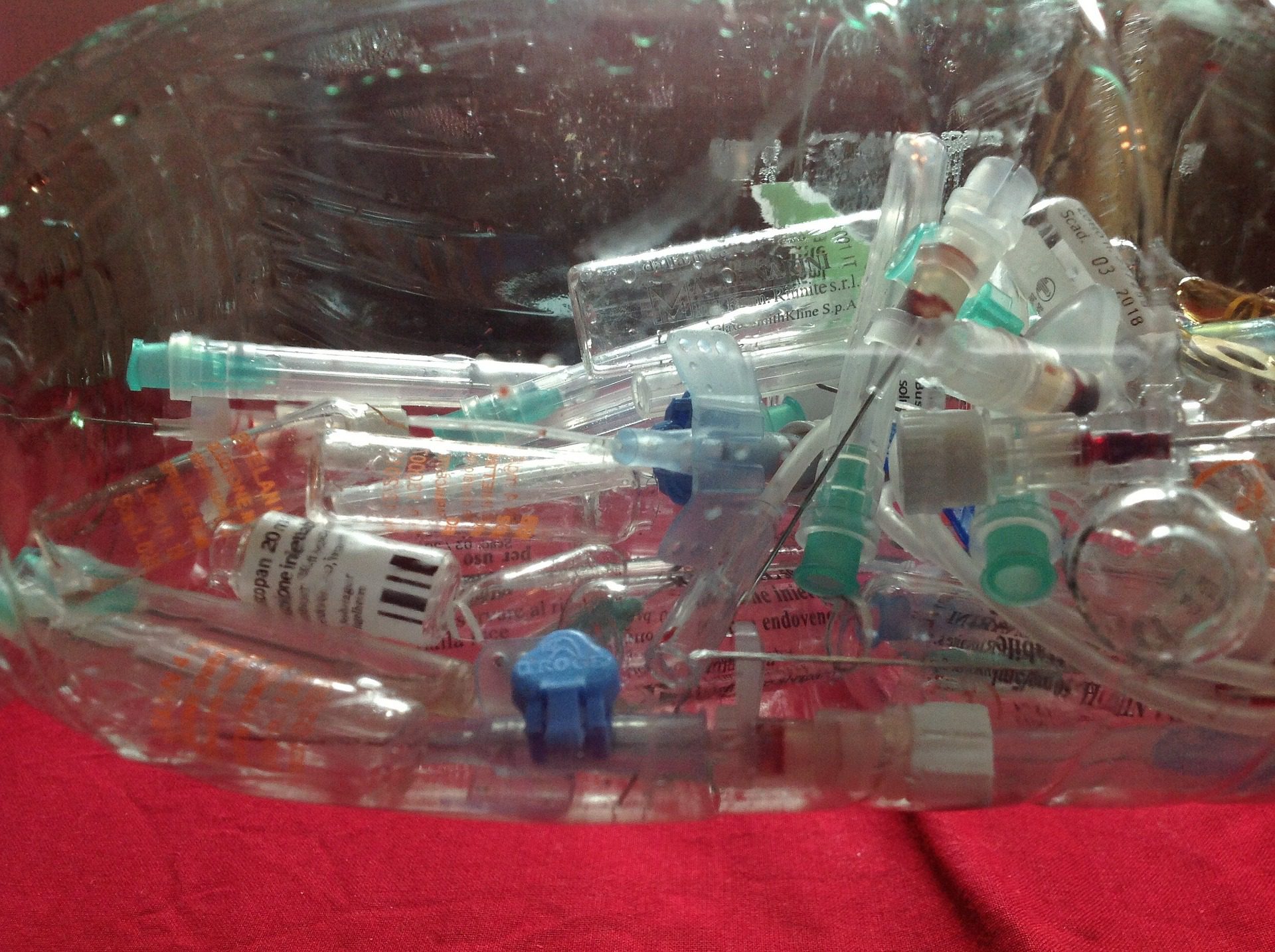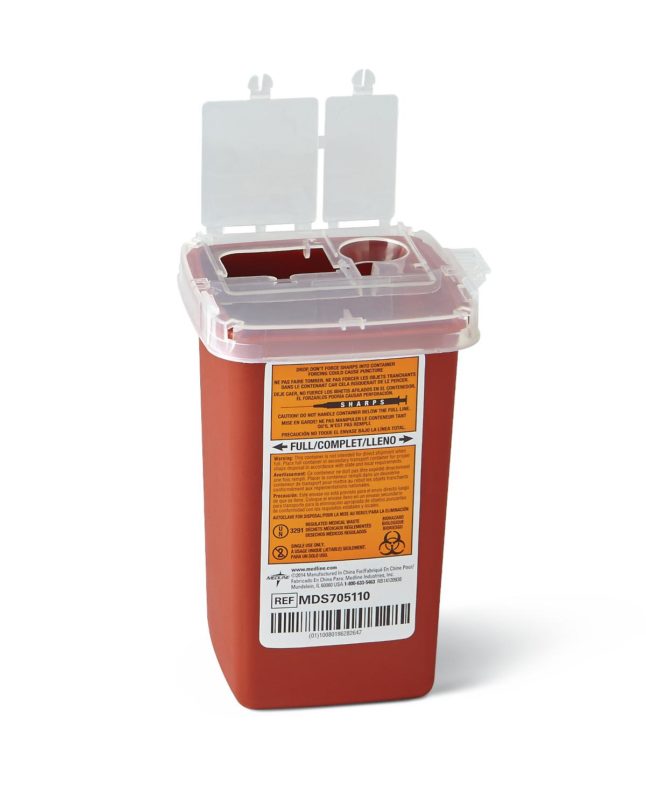Safety and security First: Your Overview to Accountable Medical Waste Removal Services
Safety and security First: Your Overview to Accountable Medical Waste Removal Services
Blog Article
The Relevance of Appropriate Medical Waste Disposal: An Overview for Health Care Facilities
Appropriate clinical waste disposal is an important aspect of medical care center administration, making sure the safety and security and well-being of people, staff, and the environment. From understanding the various categories of medical waste to conforming with regulative demands, health care centers need to take on reliable waste partition techniques and choose appropriate disposal methods.
Understanding Medical Waste Categories
Recognizing clinical waste groups is crucial for correct disposal in medical care facilities. Medical waste is a broad term that encompasses various kinds of waste generated in healthcare settings, such as medical facilities, laboratories, and facilities. Categorizing medical waste aids guarantee that it is handled, saved, and disposed of safely and based on suitable guidelines.
There are a number of categories of clinical waste that medical care centers need to be familiar with. These classifications consist of transmittable waste, sharps waste, pharmaceutical waste, chemical waste, and contaminated waste (medical waste disposal services with WasteX). Each group has particular features and calls for different disposal techniques to decrease the danger of harm to health care employees, people, and the setting
Transmittable waste, for example, refers to throw away contaminated with possibly infectious products, such as blood, body fluids, and cells. Sharps waste includes needles, syringes, and various other sharp items that can cause injury or transmit infections. Pharmaceutical waste includes expired or unused medications, while chemical waste contains hazardous chemicals used in medical procedures. Finally, radioactive waste includes materials contaminated with radioactive materials, such as nuclear medication products.
Conformity With Regulatory Demands
Health care facilities must ensure compliance with governing requirements for appropriate clinical waste disposal. Governing bodies, such as the Epa (EPA) and the Occupational Safety And Security and Health Management (OSHA), have actually established guidelines and policies to safeguard public wellness and the environment. These laws describe the proper handling, storage, transportation, and disposal of medical waste.
Conformity with regulatory demands is important for medical care facilities to stay clear of lawful penalties, reputational damages, and potential injury to human health and the setting. Failure to abide by these guidelines can result in penalties, suits, and also the suspension or cancellation of running licenses.
To ensure conformity, healthcare facilities ought to develop extensive waste monitoring programs that include team training, appropriate waste partition, and making use of ideal containers and labels. Normal audits and evaluations must also be carried out to recognize any non-compliance concerns and address them immediately.
It is important for healthcare centers to keep up to day with changes in guidelines and upgrade their waste management practices as necessary. This can be achieved by actively keeping track of updates from regulative bodies and taking part in training programs and workshops.
Applying Effective Waste Segregation Practices
To guarantee proper medical waste disposal, healthcare facilities should carry out reliable waste partition methods. Waste partition is a critical action in the overall waste management process, as it helps decrease the risk of infection, avoids cross-contamination, and guarantees the safe disposal of various kinds of waste. Efficient waste partition practices entail dividing clinical waste into different classifications based on its qualities and prospective risks.
One common practice is the partition of sharps waste, such as scalpels and needles, from other kinds of medical waste. Sharps waste ought to be placed in puncture-resistant containers to stop injuries and prospective infections. Additionally, contaminated materials, such as chemicals and pharmaceuticals, must be separated from general clinical waste to stop ecological contamination.
Appropriate labeling and color-coding of waste containers are vital for effective waste segregation. Clear and noticeable labels need to be put on each container to suggest the kind of waste it includes and any type of unique handling needs - medical waste disposal services with WasteX. In addition, color-coding can be utilized to separate in between different waste groups, making it easier for health care team to get rid of and identify of waste properly
Normal training and education for healthcare personnel is essential for the successful execution of waste partition practices. Team member need to be informed on the various waste categories, proper segregation strategies, and the importance of complying with waste administration methods. This will certainly help make certain conformity and consistency in waste segregation practices throughout the facility.
Picking Appropriate Disposal Approaches
Correct option of suitable disposal techniques is essential in guaranteeing why not find out more the eco liable and risk-free monitoring of medical waste in healthcare facilities. Health care facilities produce a range of clinical waste, including sharps, infectious waste, pharmaceutical waste, and chemical waste - medical waste removal service. Each sort of waste requires particular disposal approaches to lessen the threat of contamination, injury, and environmental damage
One typical disposal method for clinical waste is incineration. Incineration entails the regulated burning of waste at high temperatures.

Chemical sanitation is one more method utilized for particular types of medical waste, such as pharmaceutical waste. This method utilizes pop over to these guys chemicals to neutralize or ruin pollutants. It is crucial to pick chemicals that are ecologically pleasant and safe.
In many cases, garbage dump disposal might appropriate for non-hazardous medical waste (medical waste disposal services with WasteX). Appropriate segregation and product packaging are critical to protect against leak or contamination.
Ultimately, healthcare centers need to very carefully review the characteristics of their clinical waste and choose appropriate disposal techniques that focus on safety and security, environmental management, and regulatory conformity. Normal training and tracking are necessary to make certain that healthcare staff follows correct disposal procedures.

Training and Educating Team on Appropriate Disposal Procedures
Team education and training play a crucial function in ensuring the correct disposal of clinical waste in healthcare facilities. It is crucial that all personnel participants, including medical professionals, nurses, professionals, and support staff, receive extensive training on correct disposal procedures. This training must cover the different sorts of clinical waste, their potential risks, and the appropriate techniques for handling, segregating, and taking care of them.
One of the main objectives of staff education and learning and training is to guarantee that all medical care professionals comprehend the significance of correct disposal procedures and the potential effects of improper waste administration. They require to be familiar with the threats associated with medical waste, such as the transmission of infections and the contamination of the atmosphere. medical waste removal service. By recognizing these risks, personnel will certainly be more motivated to follow appropriate disposal protocols and take the needed preventative measures to shield themselves, their colleagues, and the area
Educating should also cover using individual safety devices (PPE) and the appropriate methods for taking care of medical waste. Staff members should be informed on exactly how to determine and segregate different sorts of waste, such as sharps, infectious waste, and hazardous chemicals. They ought to likewise be trained on the see page appropriate use of waste containers, such as sharps containers and biohazard bags, as well as the relevance of labeling and securing these containers appropriately.
Additionally, team education and learning and training must include routine updates and correspondence course to guarantee that healthcare specialists remain educated regarding the most recent laws and ideal methods in medical garbage disposal. This continuous education and learning is critical to preserve a high level of recognition and compliance among personnel participants.
Final Thought
In verdict, appropriate clinical waste disposal is of utmost relevance for healthcare facilities. Comprehending the various groups of medical waste and conforming with governing demands ensures the safety and security and health of both health care employees and the basic public.
From comprehending the different groups of clinical waste to complying with regulatory requirements, healthcare facilities should embrace reliable waste partition techniques and pick appropriate disposal methods. These categories include infectious waste, sharps waste, pharmaceutical waste, chemical waste, and contaminated waste.To make sure proper clinical waste disposal, healthcare facilities should apply effective waste segregation practices. Waste partition is a vital action in the general waste management process, as it aids reduce the risk of infection, stops cross-contamination, and makes certain the secure disposal of various kinds of waste. Health care centers create a range of clinical waste, including sharps, contagious waste, pharmaceutical waste, and chemical waste.
Report this page